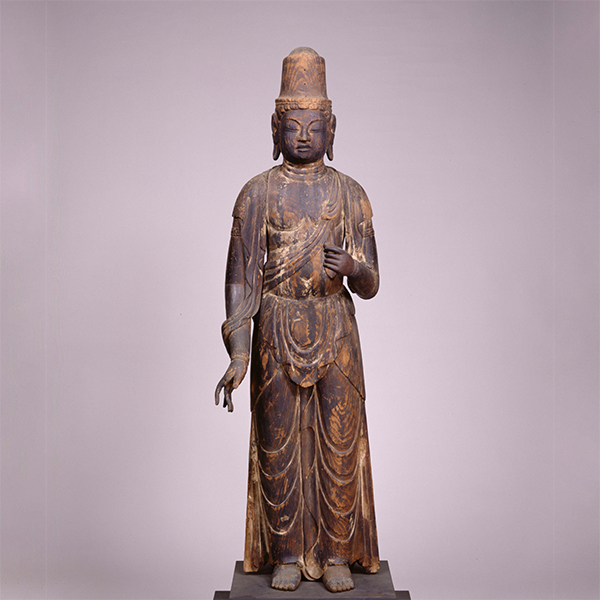Sculpture
-

Bodhisattva, Formerly owned by Wakiya'an, Nibu, Okawa-gun, Kagawa, Heian period, 10th–11th century
Japanese Gallery (Honkan) Room 11
June 13, 2023 (Tue) - September 18, 2023 (Mon)Japan has three main traditions of sculpture: Buddhist deities, Shinto deities, and portraits of people. Buddhism was introduced to Japan from the Korean Peninsula in the 6th century, together with sculptures of Buddhist deities. These sculptures were made primarily for worship. Making a sculpture was also an “act of spiritual merit” that would help one’s prayers to be answered.
In contrast, Shinto is the indigenous religion of Japan. Since ancient times, people believed that Shinto deities dwell in natural features like mountains and rivers, and rarely depicted them as humanlike sculptures. Even when a Shinto shrine had a sculpture for worship, the priests usually kept it hidden from view out of respect.
Some portrait sculptures were also worshipped, as they showed deified monks or samurai. Others were made to remember the dead and pray for their salvation. This gallery features works mainly from the Heian (794–1192) and Kamakura (1192–1333) periods, when many of Japan’s most admired sculptures were created.
| Designation | Name | Creation/ Excavation/ Provenance |
Period | Acquisition/ Ownership/ Accession Number |
CMT | ||
| Highlight | The Wisdom King Dai'itoku Riding a Water Buffalo | Kamakura period, 13th century | Lent by Sensōji Temple, Tokyo | ||||
| Highlight | Heavenly King | Heian period, 9th century | C-326 | ||||
| The Wisdom King Fudō | Heian period, 12th century | C-312 | |||||
| Highlight | The Buddha Yakushi | Heian period, 11th century | Lent by Sohgo Security Services Co., Ltd. |
